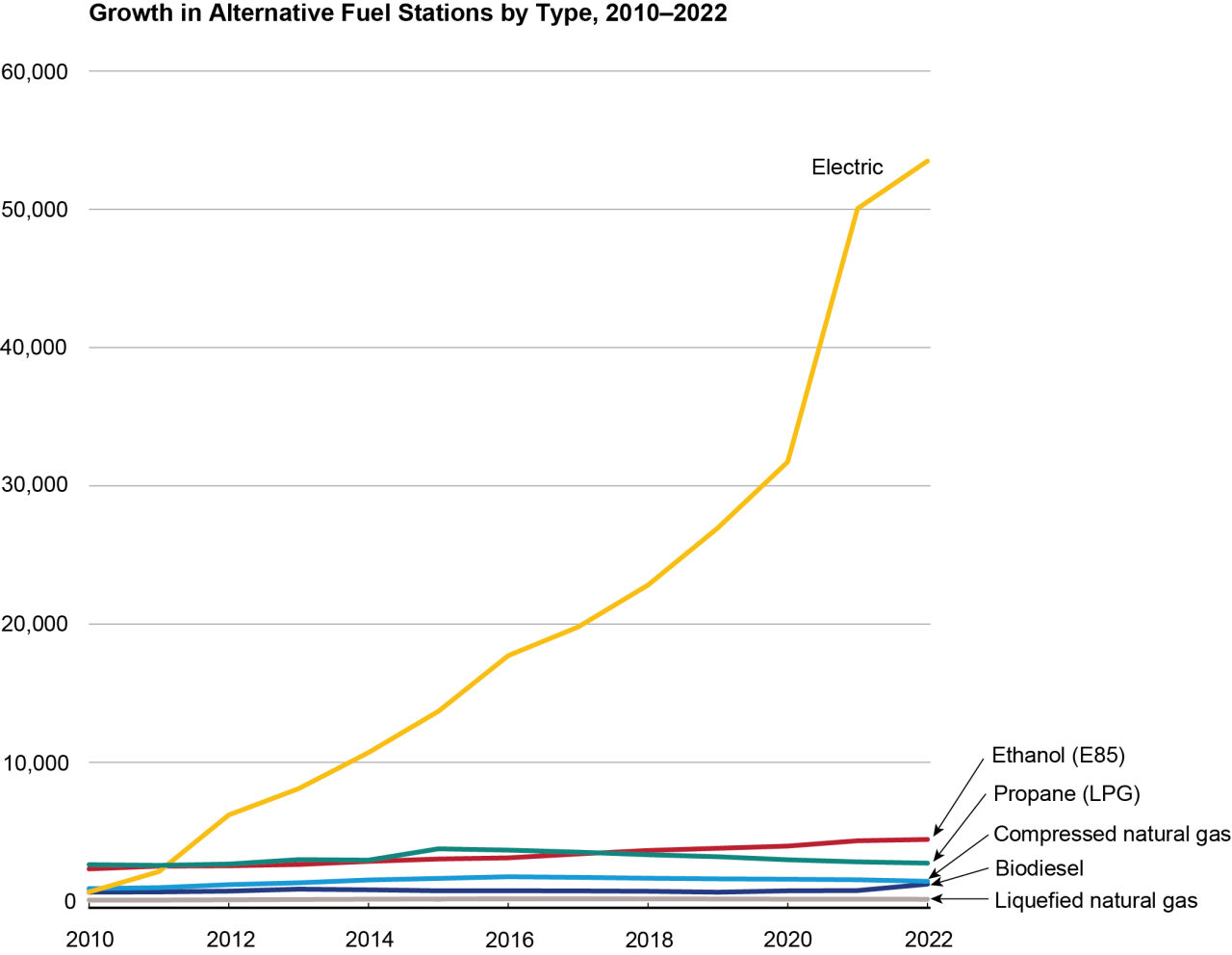Electric vehicle charging stations experiencing significant growth
The nation’s alternative fuel infrastructure has nearly doubled in size as the transportation industry prepares for zero-emission standards, largely the result of a dramatic increase in electric vehicle charging stations.
According to the Bureau of Transportation Statistics, there are more than 70,000 alternative fueling stations in the United States as of April 1. That is a nearly 90% increase from April 1, 2020, when there were fewer than 40,000 alternative fueling stations in the country.
Alternative fuels include a variety of products, including ethanol, biodiesel, propane, hydrogen, natural gas and electricity. However, electric vehicle charging stations is largely responsible for the dramatic increase in fueling stations. Charging stations account for about 84% of all alternative fueling stations.

Increases in electric vehicle charging stations come from funding from the federal government. In 2011, there were only about 2,100 charging stations in the nation. Growth rapidly picked up in 2012 thanks to the American Recovery and Reinvestment Act of 2009. That piece of legislation included $2 billion for advanced battery manufacturing and another $400 million for transportation electrification projects.
In 2012 alone, the number of electric vehicle charging stations tripled after adding 4,100 charging stations.
From 2013 to 2020, the number of charging stations reached 32,000, a nearly 300% increase. Between Jan. 1, 2021, and April 1, 2023, there were 19,000 charging stations added to the infrastructure.
However, most of the electric vehicle charging station infrastructure is concentrated on the East and West coasts, with California alone accounting for 21% of the charging stations. Per 1,000 lane miles, Midwest states have few charging stations. In terms of growth from 2022 to 2023, Arkansas, Louisiana, Michigan, New Jersey and North Dakota increased their number of electric vehicle charging stations by more than 25%.
Where are all these charging stations located? According to the Bureau of Transportation Statistics, hotels, car dealers and shopping malls are home to the greatest number of charging stations.
EPA’s emission standards expediting electric vehicles
An increase in electric vehicle charging stations is required to meet the U.S. Environmental Protection Agency’s recently proposed strict vehicle emission standards, which include heavy-duty trucks.
On April 12, the Biden administration announced the proposal of two new rules regarding vehicle emissions. One rule deals with emissions from passenger vehicles. The second rule updates emission standards for buses, freight trucks and other heavy-duty vehicles.
The EPA’s proposed emission standards for heavy trucks would require a quarter of new heavy trucks sold in the U.S. to be all-electric by 2032.
The Owner-Operator Independent Drivers Association calls the rulemaking “hurried” and points out the lack of a national charging infrastructure. OOIDA President Todd Spencer issued the following statement:
“The Biden-Harris EPA is continuing their regulatory blitz on small-business truckers. The latest proposal comes on the heels of a hurried nitrogen oxide emissions rulemaking finalized in December along with a California waiver mandating sales of electric trucks. Today’s announcement is a blatant attempt to force consumers into purchasing electric vehicles while a national charging infrastructure network remains absent for heavy-duty commercial trucks. Professional drivers are skeptical of (electric vehicle) costs, mileage range, battery weight and safety, charging time, and availability. It’s baffling that the EPA is pushing forward with more impractical emissions timelines without first addressing these overwhelming concerns with electric (commercial motor vehicles). The pursuit of this radical environmental agenda in conjunction with an anticipated speed limiter mandate will regulate the safest and most experienced truckers off the road.” LL









